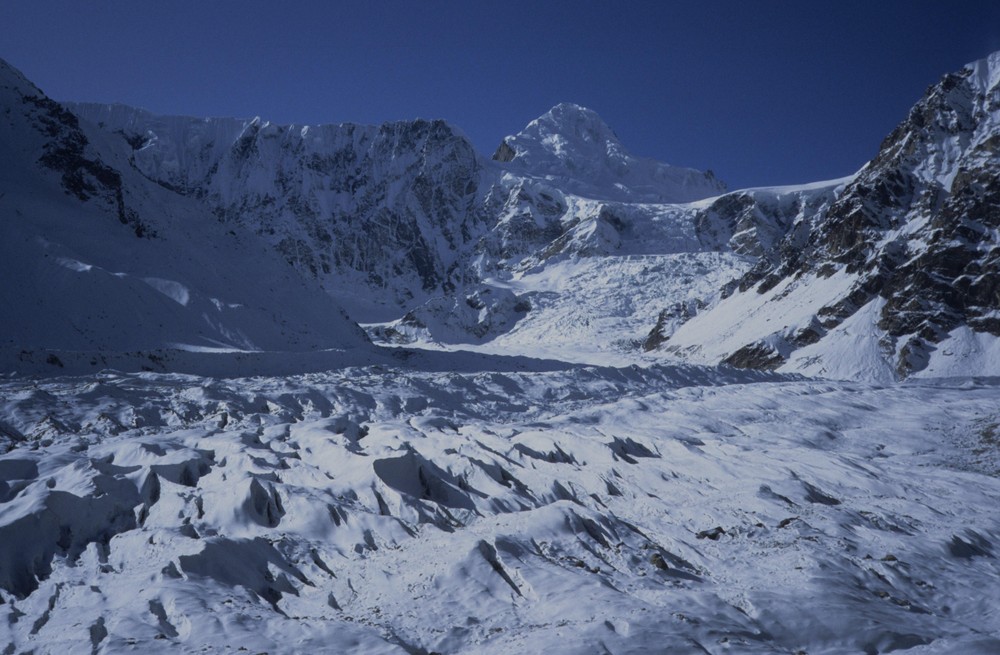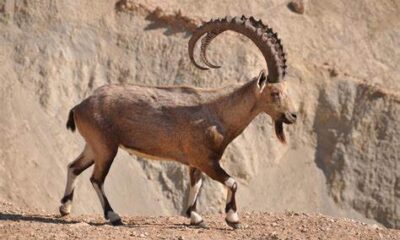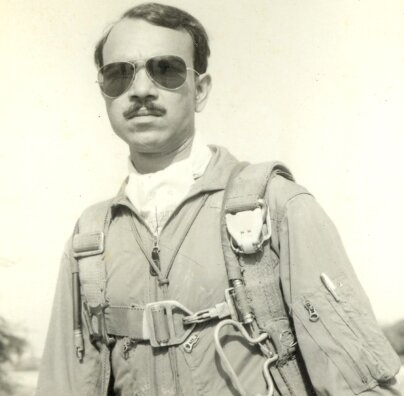Article
Rupal Glacier: A Majestic Icy Giant in the Heart of the Himalayas
Published
7 months agoon
By
EDITOR
The Rupal Glacier is a breathtaking and formidable glacier located in the Rupal Valley, in the Astore District of Pakistan’s Gilgit-Baltistan region. This massive ice flow is nestled beneath the towering Nanga Parbat, the ninth-highest mountain in the world, and is part of the greater Himalayan mountain range. The Rupal Glacier is not just a geographical marvel but also a significant contributor to the region’s ecosystem and a point of interest for mountaineers and trekkers from around the world.
Geographic Location and Surroundings
The Rupal Glacier is situated on the southern slopes of Nanga Parbat, often referred to as the “Killer Mountain” due to the challenges it poses to climbers. The glacier lies within the Rupal Valley, a pristine and remote valley that is characterized by its lush green meadows, dense forests, and the stunning backdrop of towering peaks. The valley is accessible from the town of Astore, and the journey to the glacier involves a trek that is as challenging as it is rewarding, offering spectacular views of the surrounding landscapes.
Physical Characteristics
- Type: Valley Glacier
- Length: Approximately 13 kilometers (8 miles)
- Width: Varies; narrow at the head, wider at the lower end
- Elevation: Ranges from around 3,500 meters (11,500 feet) at the terminus to over 6,000 meters (19,700 feet) near Nanga Parbat
- Surrounding Peaks: Nanga Parbat (8,126 meters), Laila Peak, Rupal Peak
Glacial Features
- Crevasses: Deep fissures present due to the glacier’s movement over uneven terrain.
- Moraines: Extensive lateral and terminal moraines composed of rock debris carried by the glacier.
- Icefall: Steeper sections of the glacier where ice movement causes it to break into blocks and form seracs.
Climate and Environment
- Temperature: Cold alpine climate, with temperatures often dropping below freezing, particularly in the higher elevations.
- Precipitation: Primarily snowfall, which feeds the glacier, with minimal rain due to the high altitude.
- Retreat and Advance: The glacier has shown signs of retreat, similar to many glaciers worldwide, due to global warming and climate change.
Hydrological Importance
- Water Source: The glacier is a crucial source of meltwater that feeds into the Rupal River, a tributary of the Astore River, which eventually contributes to the Indus River system.
- Seasonal Flow: Melting increases in the summer, leading to higher river flows, essential for agriculture and daily use in the region.
Access and Trekking
- Nearest Town: Astore, approximately 50 kilometers from the glacier.
- Trekking Route: Accessed via a trek through Rupal Valley, often starting from the village of Tarashing.
- Trek Difficulty: Moderate to strenuous, depending on weather conditions and altitude acclimatization.
- Best Time to Visit: June to September, when the weather is relatively stable, and snow cover is minimal.
Mountaineering Significance
- Rupal Face: The glacier is the gateway to the Rupal Face of Nanga Parbat, a 4,600-meter vertical wall that is one of the most challenging climbs in the world.
- Historical Expeditions: The first successful ascent of the Rupal Face was made in 1970 by an Austrian team, a milestone in mountaineering history.
Ecological and Cultural Context
- Flora and Fauna: The surrounding areas of the glacier are home to alpine flora and fauna, including rare species adapted to the harsh environment.
- Local Communities: Inhabited by the Shina and Balti people, who have a deep cultural connection to the land and rely on its resources for sustenance.
- Cultural Significance: The glacier and surrounding mountains hold spiritual and cultural importance for the local communities, often featuring in folklore and traditional practices.
You may like
-


Aik Qaum, Aik Sath | Pakistan Zindabad | Pakistan Day Song | 23rd March 2024 | AIKQAUM.COM
-


Nation celebrates Pakistan Day today with traditional zeal
-


Pakistan Day: A Reminiscence of the Heroic Struggle of Muslims of the Subcontinent
-


Literary Figures are the narrator of the History
-


The Chiltan Ibex: A Rare Treasure of Balochistan
-


Gilgit Say Gwadar, Karachi Say Peshawar, Aik Qaum
Article
The Chiltan Ibex: A Rare Treasure of Balochistan
Published
2 weeks agoon
March 19, 2025By
EDITOR
The Chiltan ibex (Capra aegagrus chiltanensis), a subspecies of the wild goat, is one of the most unique and endangered animals native to Pakistan. Found exclusively in the rocky highlands of the Chiltan range within the Hazarganji-Chiltan National Park in Balochistan, this elusive animal represents the region’s rich biodiversity and ecological heritage.
Physical Characteristics
The Chiltan ibex is a strikingly beautiful species, with a robust, muscular build perfectly suited for navigating steep and rocky terrains. Males are particularly distinctive, boasting impressive curved horns that can grow up to 30 inches (76 cm) in length. Their coat is light brown, with a darker stripe running along their back and legs, providing excellent camouflage in their arid mountainous habitat.
Females are smaller in size with shorter, more slender horns, and their coloration is less pronounced, blending seamlessly into their surroundings. This camouflage helps protect them and their offspring from predators such as wolves and large birds of prey.
Habitat and Range
The Chiltan ibex inhabits the rugged, semi-arid regions of the Chiltan range, located within the Hazarganji-Chiltan National Park, southwest of Quetta. These high-altitude areas, ranging from 1,500 to 3,200 meters above sea level, are characterized by rocky cliffs, sparse vegetation, and extreme weather conditions.
The ibex is well-adapted to this challenging environment, where it feeds on grasses, shrubs, and the leaves of juniper trees. Its ability to climb steep slopes and jump across narrow ledges gives it a unique advantage in escaping predators and surviving in such inhospitable terrain.
Behavior and Social Structure
Chiltan ibexes are diurnal, meaning they are active during the day. They are typically found in small groups, with herds consisting of females and their young. Males are more solitary, joining herds only during the breeding season, which occurs in the late autumn and winter months.
During this time, males engage in dramatic displays of strength to compete for mating rights, including horn clashing and dominance rituals. After a gestation period of around six months, females give birth to one or two kids in spring, when food availability is higher.
Conservation Status
The Chiltan ibex is classified as endangered due to its restricted range, habitat loss, and poaching. Habitat degradation caused by overgrazing, deforestation, and human encroachment poses significant threats to its survival.
Historically, the ibex faced heavy hunting pressure for its horns, considered a symbol of prestige, and for its meat. Although hunting is now banned in the national park, illegal poaching remains a concern.
Conservation Efforts
To protect the Chiltan ibex and its fragile ecosystem, the Hazarganji-Chiltan National Park was established in 1980. Spanning over 32,500 acres, the park provides a safe haven for the ibex and other wildlife, such as wolves, foxes, and birds of prey.
Conservation efforts include:
- Anti-Poaching Measures: Increased patrolling and strict enforcement of hunting bans have helped reduce poaching incidents.
- Habitat Restoration: Programs to control overgrazing and reforest juniper woodlands are underway to restore the ibex’s natural habitat.
- Public Awareness Campaigns: Local communities are being educated about the importance of biodiversity and the role of the Chiltan ibex in maintaining ecological balance.
- Eco-Tourism Initiatives: Promoting responsible tourism generates revenue for conservation projects and raises awareness about the ibex’s plight.
Ecological Importance
The Chiltan ibex plays a vital role in its ecosystem as both a grazer and prey species. By feeding on shrubs and grasses, it helps maintain vegetation balance, preventing overgrowth and contributing to soil health. At the same time, it serves as a food source for predators, sustaining the natural food chain.
Protecting the ibex is not just about saving a single species—it’s about preserving an entire ecosystem that supports numerous forms of life, from tiny insects to apex predators.
Cultural Significance
For the people of Balochistan, the Chiltan ibex is more than just a wild animal; it is a symbol of the region’s natural beauty and resilience. Local folklore often intertwines with the ibex, celebrating its agility and strength. The species also draws international attention, making it a flagship for wildlife conservation in Pakistan.
The Future of the Chiltan Ibex
While conservation efforts have shown promise, the Chiltan ibex remains vulnerable. Protecting this rare species requires continued collaboration between government agencies, conservation organizations, and local communities.
By safeguarding the Chiltan ibex, we not only preserve a unique animal but also protect the fragile ecosystem of Balochistan, ensuring that future generations can marvel at the beauty and resilience of this incredible species.
The Chiltan ibex is a testament to nature’s ability to adapt and survive in the harshest of environments. As efforts to protect it continue, this majestic animal stands as a beacon of hope for wildlife conservation in Pakistan.
Article
Aik Qaum: The Fusion of Integrity and Patriotism
Published
2 weeks agoon
March 19, 2025By
EDITOR
We keep Integrity closest to our Heart and Patriotism on top of our mind.
Integrity and patriotism are not separate entities; they are intertwined in the soul of Pakistan. The people understand that to be a patriot is to uphold the principles of integrity. Honesty and love for one’s country are two sides of the same coin. Together, these values form the essence of “Aik Qaum.”
The fusion of integrity and patriotism is evident in the everyday lives of Pakistanis. It’s in the farmer toiling the fields, the teacher educating the youth, and the soldier guarding the borders. It’s in the child who dreams of a better Pakistan and the elderly who have seen the nation grow. “Aik Qaum” is the realization that integrity and patriotism are the heart and mind of Pakistan, beating in unison to guide the nation forward.
As we celebrate the spirit of “Aik Qaum,” we honor the values that make Pakistan a unique and resilient nation. Integrity and patriotism serve as our guiding stars, leading us towards a brighter and more prosperous future. In the heart of every Pakistani and at the forefront of their minds, “Aik Qaum” stands as a testament to the strength of a united nation, bound by the principles of integrity and the unyielding love for their homeland.
In Pakistan, “Aik Qaum” is not just a motto; it’s a way of life that embodies the enduring spirit of a proud and united nation.

Muhammad Mahmood Alam, often referred to as M.M. Alam, was a legendary Pakistani fighter pilot who gained fame during the 1965 Pak-Indo War. He is celebrated for his exceptional skills and courage in combat, particularly for downing five Indian Hawker Hunter fighter aircraft in a single dogfight in less than a minute. This remarkable achievement earned him the nickname “Little Dragon” and solidified his reputation as one of Pakistan’s most celebrated fighter pilots.

M.M. Alam’s extraordinary feat of shooting down five enemy aircraft in such a short span of time is still regarded as one of the most significant accomplishments in aerial combat history. He was an inspiration to generations of Pakistani pilots and remains a symbol of bravery and skill in the Pakistan Air Force’s history.
While the term “Top Gun” is often associated with elite fighter pilots, it’s essential to note that M.M. Alam achieved legendary status not only within Pakistan but also on the international stage due to his exceptional combat performance. His legacy as a real-life “Top Gun” endures in the annals of aviation history
M.M. Alam’s Aircraft: The F-86 Sabre and the Indian Hawker Hunter
M.M. Alam’s Aircraft: The F-86 Sabre
1. Overview:
- Type: Fighter aircraft
- Manufacturer: North American Aviation
- Role: Air superiority fighter and ground attack
- First Flight: October 1, 1947
- Introduced: 1949
- Primary User: United States Air Force (USAF), also used by Pakistan Air Force (PAF) and various other air forces globally
2. Design and Features:
- The F-86 Sabre was a transonic jet fighter aircraft that became one of the most prominent American fighter planes during the Korean War and throughout the early Cold War period.
- Engine: Powered by a General Electric J47 turbojet engine, capable of producing about 5,200 lbf of thrust.
- Speed: The Sabre could reach a top speed of approximately 687 mph (Mach 0.9), making it one of the fastest jet fighters of its time.
- Armament: The aircraft was equipped with six .50 caliber M3 Browning machine guns mounted in the nose. It could also carry bombs and rockets for ground attack missions.
- Maneuverability: The Sabre’s swept-wing design contributed to its excellent maneuverability at high speeds, which was crucial during dogfights.
- Combat Role: The F-86 Sabre was primarily designed for air-to-air combat but was versatile enough to perform ground-attack missions. Its agility and speed made it a formidable adversary in dogfights, particularly against Soviet-built MiG-15s during the Korean War.
3. M.M. Alam and the F-86 Sabre:
- During the 1965 Indo-Pak war, M.M. Alam flew the F-86 Sabre and achieved extraordinary success in aerial combat.
- Alam’s mastery of the Sabre was evident in his ability to outmaneuver and outshoot the Indian Air Force’s (IAF) more modern aircraft, particularly the Hawker Hunter.
- His most famous achievement came on September 7, 1965, when he shot down five IAF Hawker Hunters in less than a minute using the F-86 Sabre, setting a world record for the fastest air-to-air kills.
Indian Aircraft: The Hawker Hunter
1. Overview:
- Type: Fighter aircraft
- Manufacturer: Hawker Aircraft
- Role: Fighter-bomber, ground attack, and interceptor
- First Flight: July 20, 1951
- Introduced: 1954
- Primary User: Royal Air Force (RAF), Indian Air Force (IAF), and various other air forces globally
2. Design and Features:
- The Hawker Hunter was a transonic British jet fighter that served as the primary front-line fighter for the Royal Air Force and was extensively used by the Indian Air Force during the 1965 Indo-Pak war.
- Engine: Powered by a Rolls-Royce Avon turbojet engine, producing between 7,500 lbf and 10,150 lbf of thrust depending on the variant.
- Speed: The Hunter could reach a top speed of approximately 715 mph (Mach 0.94).
- Armament: The Hunter was equipped with four 30mm ADEN cannons and could carry a variety of bombs, rockets, and missiles for air-to-ground and air-to-air combat.
- Maneuverability: The Hunter was known for its smooth handling, robust design, and reliability. Its performance made it a popular aircraft among pilots.
- Combat Role: The Hawker Hunter served as both an interceptor and a ground-attack aircraft. Its versatile design allowed it to be used in multiple roles, from air superiority missions to close air support.
3. Indian Air Force and the Hawker Hunter:
- The Hawker Hunter was one of the primary aircraft used by the Indian Air Force during the 1965 Indo-Pak war. It was considered a superior aircraft to many of the older jet fighters in service at the time.
- Despite the Hunter’s technological advantages, M.M. Alam’s exceptional flying skills allowed him to defeat these aircraft decisively during dogfights, most notably in the skies over Sargodha.
- The Hunter was involved in several key air battles during the conflict, and its pilots were often engaged by PAF’s F-86 Sabres, including those flown by M.M. Alam.
Comparative Analysis
**1. Technological Comparison:
- F-86 Sabre: Despite being older and less powerful compared to the Hawker Hunter, the F-86 Sabre was highly maneuverable and had a combat-proven track record. It was an agile and reliable aircraft, particularly effective in dogfights.
- Hawker Hunter: The Hunter was a more modern aircraft with better speed, armament, and avionics. It had a higher top speed and could carry a more diverse payload, making it more versatile in various combat roles.
2. Tactical Superiority:
- M.M. Alam’s Tactical Genius: The technological edge of the Hawker Hunter was effectively neutralized by M.M. Alam’s superior tactics, quick decision-making, and precise shooting. His deep understanding of the F-86 Sabre’s capabilities allowed him to exploit its strengths and outmaneuver the Hunters.
- Dogfight Success: Alam’s ability to down five Hawker Hunters in under a minute was not just a demonstration of his flying skills but also a reflection of his deep tactical acumen. He capitalized on the Sabre’s strengths, such as its rapid acceleration and tighter turning radius, to dominate the aerial battle.
3. Historical Impact:
- Legacy of the F-86 Sabre: The success of the F-86 Sabre in the hands of pilots like M.M. Alam has become a celebrated chapter in military aviation history. The aircraft, despite its age, proved that skill and strategy could triumph over technological superiority.
- Role of the Hawker Hunter: While the Hawker Hunter was a formidable aircraft, its performance in the 1965 war, particularly against M.M. Alam, highlighted the importance of pilot expertise and tactical proficiency in determining the outcome of air engagements.
Conclusion
The aerial battles between the F-86 Sabre and the Hawker Hunter during the 1965 Indo-Pak war are a testament to the enduring truth that while technology plays a critical role in modern warfare, it is the skill, strategy, and courage of the pilot that ultimately determine victory. M.M. Alam’s legendary feats in the F-86 Sabre against the Indian Hawker Hunters remain one of the most remarkable stories in the history of aerial combat, and they continue to inspire future generations of fighter pilots around the world.


Aik Qaum, Aik Sath | Pakistan Zindabad | Pakistan Day Song | 23rd March 2024 | AIKQAUM.COM

Nation celebrates Pakistan Day today with traditional zeal








